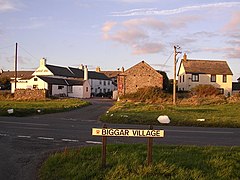
Barrow-in-Furness is a town in Cumbria, North-West England. Historically part of Lancashire, it was incorporated as a municipal borough in 1867 and merged with Dalton-in-Furness Urban District in 1974 to form the Borough of Barrow-in-Furness. At the tip of the Furness peninsula, close to the Lake District, it is bordered by Morecambe Bay, the Duddon Estuary and the Irish Sea. In 2011, Barrow's population was 57,000, making it the second largest urban area in Cumbria after Carlisle. Natives of Barrow, as well as the local dialect, are known as Barrovian.

Barrow-in-Furness is a local government district with borough status in Cumbria, England. It is named after its main town, Barrow-in-Furness. Other settlements include Dalton-in-Furness and Askam-in-Furness. It is the smallest district in the county, but is the most densely populated, with 924 people per square kilometre. The population was 71,980 in 2001, reducing to 69,087 at the 2011 Census.

Furness is a peninsula and region of Cumbria in northwestern England. Together with the Cartmel Peninsula it forms North Lonsdale, historically an exclave of Lancashire.
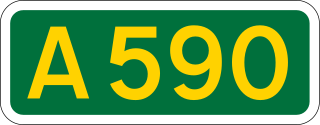
The A590 is a trunk road in southern Cumbria, in the north-west of England. It runs north-east to south-west from M6 junction 36, through the towns of Ulverston and Barrow-in-Furness to terminate at Biggar Bank on Walney Island. The road is a mixture of dual carriageway and single carriageway, with the section east of Low Newton, Cumbria to the M6 being mainly dual. Further dual sections are south of Newby Bridge, south of Greenodd and south of Ulverston. The road is the main route for tourists entering the southern Lake District. It has often humorously been described as "the longest cul-de-sac in the world".
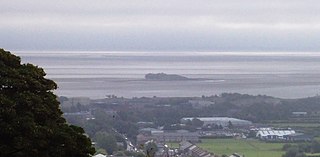
The Islands of Furness are situated to the south-west and east of the Furness Peninsula. Within England, they are the third biggest collection of islands. They are generally quite small, though at 12.99 km2 Walney Island is the eighth biggest in England. Of these, only Walney Island, Barrow Island, Roa Island and Piel Island are inhabited. The majority of the islands lie within the boundary of the Borough of Barrow-in-Furness, with some 15,000 residents constituting 20% of the district's population. They are the largest group of islands between Anglesey in Wales and the Firth of Clyde in Scotland.
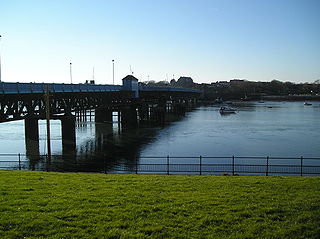
Walney Island, also known as the Isle of Walney, is an island off the west coast of England, at the western end of Morecambe Bay in the Irish Sea. It is part of Barrow-in-Furness, separated from the mainland by Walney Channel, which is spanned by the Jubilee Bridge. Walney is the largest island of the Furness Islands group, both in population and size, as well as the largest English island in the Irish Sea. Its population at the 2011 UK Census was 10,651, distributed evenly across the island's two Wards of Walney North and Walney South.
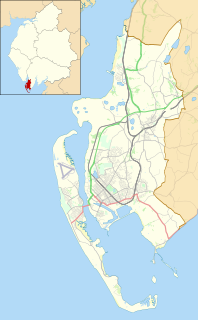
Sheep Island is an uninhabited grassy island of around 15 acres (6 ha), located just over 1⁄4 mile (400 m) from the shore of Walney Island, opposite Snab Point. It is one of the Islands of Furness and is in the Borough of Barrow-in-Furness in Cumbria in north-west England. The island's geographic location is, using the British national grid reference system, SD215639.

Barrow Island is an area and electoral ward of Barrow-in-Furness, Cumbria, England. Originally separate from the British mainland, land reclamation in the 1860s saw the northern fringes of the island connect to Central Barrow. Barrow Island is also bound to the south and east by the town's dock system and to the west by Walney Channel. The Ward population taken at the 2011 census was 2,616.
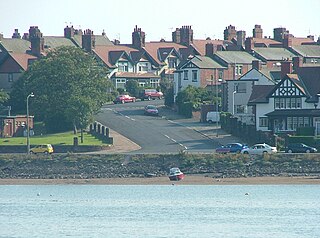
Vickerstown is an area of Barrow-in-Furness, Cumbria, England, covered by the wards of Walney North and Walney South. It is an example of a planned estate built for workers by a company needing to expand, having been constructed in the early 20th century by Vickers Shipbuilding and Engineering. Vickerstown contains two Conservation Areas and is home to the majority of the population of Walney Island.

North Scale is a village and one of only four settlements on the Isle of Walney, Cumbria, England. It is the northernmost settlement, lying a mile north of Vickerstown.
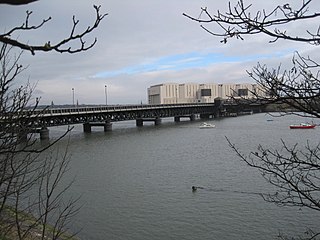
Walney Bridge, officially Jubilee Bridge, is a bascule bridge in Barrow-in-Furness, Cumbria, England. Completed in 1908, it spans Walney Channel, linking Barrow Island to Walney Island. The bridge carries the A590 trunk road, which has its western terminus on Walney.
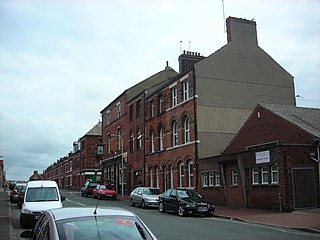
Hindpool is an area and electoral ward of Barrow-in-Furness, Cumbria, England. It is bordered by Barrow Island, Central Barrow, Ormsgill, Parkside and the Walney Channel, the local population stood at 5,851 in 2011. The ward covers the entire western half of the town centre and includes Barrow's main shopping district. Other local landmarks include the Furness College Channelside campus, the Dock Museum and the Main Public Library. Hindpool is also home to two stadia - Barrow Raiders' Craven Park and Barrow A.F.C.'s Holker Street.

Walney South is one of two wards on Walney Island in the Borough of Barrow-in-Furness, North West England. The 2001 UK census showed 5,784 people were living in the area, reducing to 5,307 at the 2011 Census. There are two main settlements within the ward: Biggar and Vickerstown. Walney Bridge connects Walney South and, in fact, the whole island to mainland Barrow.

Barrow-in-Furness Main Public Library is a Grade II listed Beaux-Arts style building located at Ramsden Square, Barrow-in-Furness, England. Operated since 1974 by Cumbria County Council, it is the largest library in the town and the present structure, designed by J A Charles was originally built as a Carnegie library with support from the Carnegie Foundation.
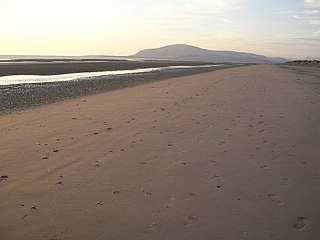
Earnse Bay is a sand and shingle beach located along the western side of Walney Island in the Borough of Barrow-in-Furness, Cumbria, England. Along with Sandy Gap and Biggar Bank, Earnse Bay forms a more or less continuous stretch of eight miles of coastline. The beach offers panoramic views of the Irish Sea, the Isle of Man and the Lake District mountains which have only recently been interrupted by the construction of three large wind farms. Earnse Bay was once planned to be developed into a reputable seaside resort to rival other nearby towns such as Morecambe and Blackpool, however these plans never fully materialised. Despite this, Earnse Bay remains Barrow's most popular beach and is busy with walkers, sunbathers and kitesurfers during the summer months.

Walney Lighthouse is a functioning lighthouse located on Walney Island in Barrow-in-Furness, Cumbria, England. The current building dates to the early 19th-century and is Grade II* listed as well as being the southernmost man-made structure in Cumbria.
The following is a timeline of the history of Barrow-in-Furness, England, United Kingdom.

The Furness Phantoms are an American Football club based in Ulverston, Cumbria, England. Established in 2011 they were elevated to full BAFA member status in 2013. They are one of two BAFANL teams in Cumbria and Lancashire, playing in a conference of the league's second tier alongside the Chester Romans, Crewe Railroaders, Halton Spartans & Leeds Bobcats. The Terriers originally trained and played at Memorial Fields on Walney Island. They then moved to Hawcoat Park and now have moved to GSK Sports & Social Club, Ulverston and still occasionally use Barrow Raiders' Craven Park stadium.
The Cumbria Men's League is a rugby league competition founded in 2013 by the top clubs from the Cumberland League and some clubs in the Barrow-in-Furness area that switched from the North West Men's League. It started as a joint venture between the Rugby Football League and the British Amateur Rugby League Association It sits directly below the National Conference League in the pyramid and above the Cumberland League and Barrow & District League.
"Wa'ney Island Cockfight" or "The Bonny Grey" is an English folk song, Roud 211. Variants of the song exist across northern England from Cumbria to Shropshire.
